How to Choose Blade Fuse Blocks
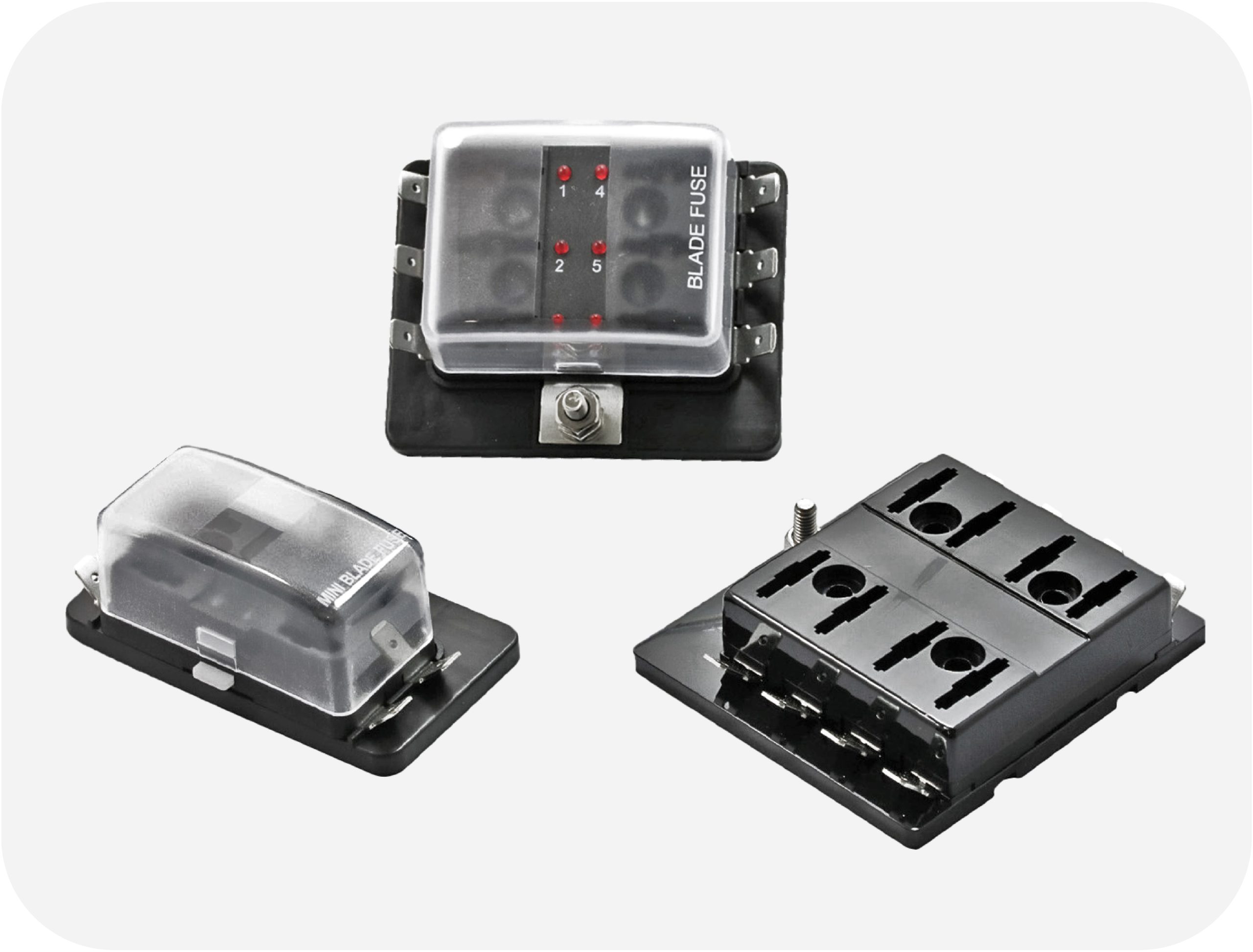
Blade fuse blocks are a sturdy and reliable way to safely distribute power to auxiliary equipment. With up to 12 branch circuits, they reduce the space required for multiple circuit protection devices and are used in a variety of industries to protect circuits in vehicles and equipment. Blade fuse blocks are often utilized in the power systems of utility vehicles and construction equipment, RVs, emergency vehicle upfitting, and off-road vehicles.
At OptiFuse, we offer a variety of blade fuse blocks for these diverse industries and applications. They come in multiple sizes, designed to be used with different blade fuse styles and with 4, 6, 8, 10 or 12 fuse slots. Cover protection and LED indication are available for most of our blocks. Additionally, different circuitry design options are offered, including ground, split or independent buses. Below, we highlight some of the factors to consider when choosing the best blade fuse block for your applications.
Cover Protection
Many of our blade fuse blocks come with or can be paired with a protective cover that protects all circuits and fuses on the block from dust, debris, splashes, and other environmental factors. For example, the BLC-106-G includes a factory-installed cover, while the BLC-106 is offered without a cover, allowing users to choose a standalone or protected configuration based on their specific application.
If the block will be installed in an application that regularly experiences harsh environments — such as in sports vehicles, agriculture equipment, utility vehicles, and construction equipment — a cover for added circuit and fuse protection is highly recommended.
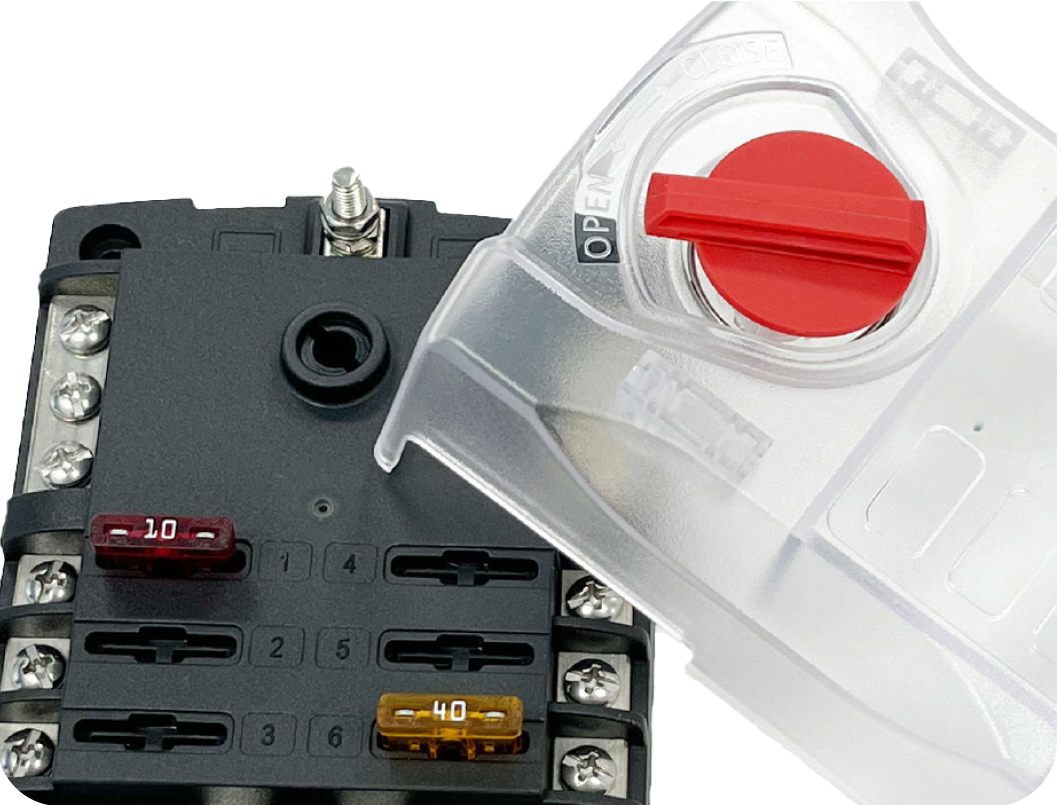
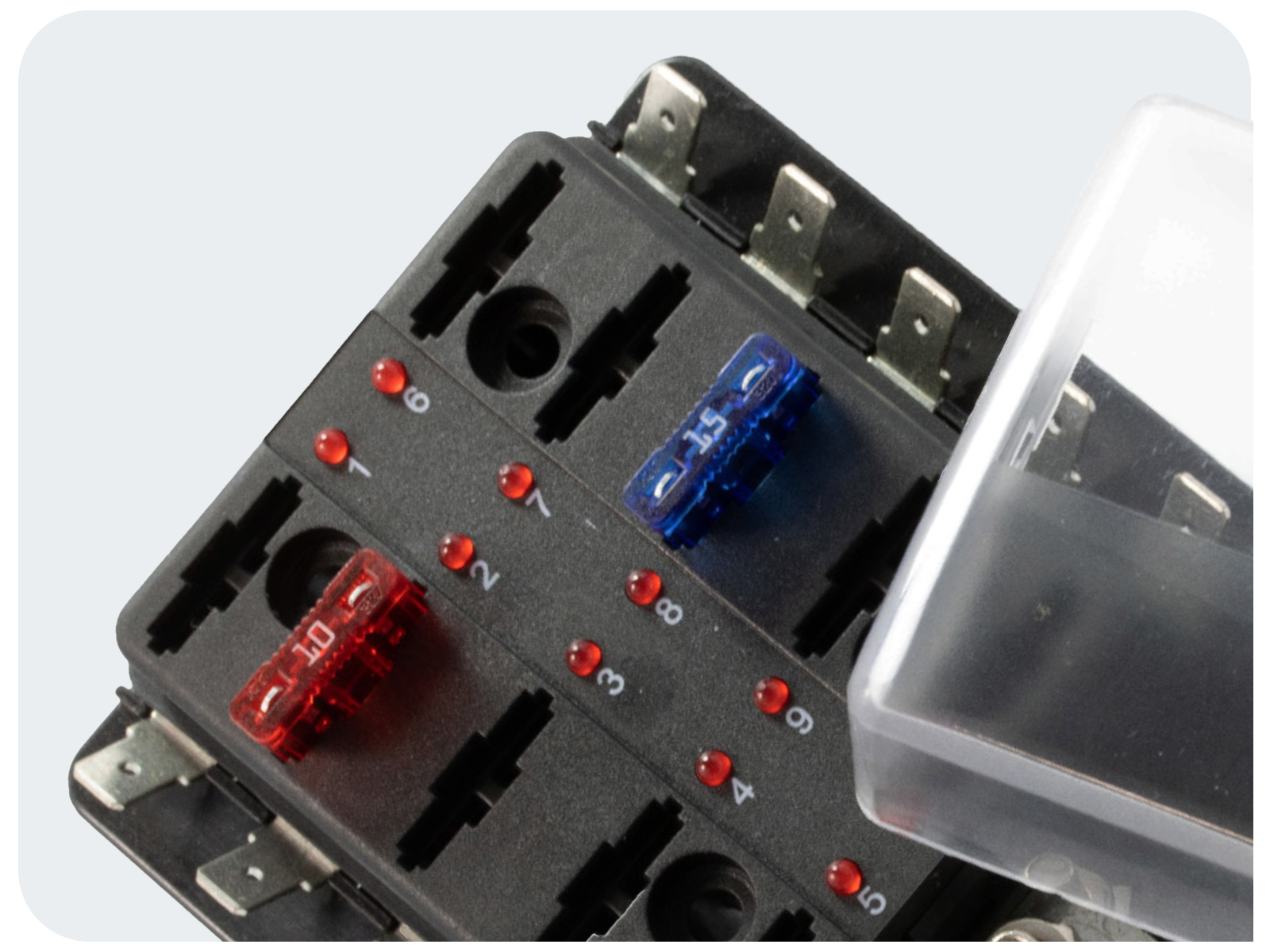
LED Indication
Blade fuse blocks with blown-fuse LED indication eliminate replacement time by pinpointing which fuse on the block needs replacement. For example, the BLR-I-306 features LED indication for each circuit, providing quick visual diagnostics. In contrast, the BLR-306 is the same block without the LED feature, offering a more cost-effective option when visual indication isn’t necessary.
Each fuse slot on the block has a separate LED light that illuminates if that fuse opens. LED indication on a fuse block eliminates the need for indicating fuses. Instead of repeatedly replacing indicating fuse after indicating fuse, non-indicating fuses can be purchased while still getting the same convenience.
Terminals Configuration
Fuse blocks come with a variety of terminal configurations. These include screw terminals, quick connect terminals, and wire terminals. Each is well suited for different applications. Screw terminals, for example, are recommended for emergency vehicles because they offer a secure connection that can easily withstand vibrations from rough terrain that this type of vehicle regularly encounters.
If secure installation is the main priority, blade fuse blocks with screw terminals are advisable. Quick connect terminals live up to their name. They allow for quick and easy insertion of the fuse block, reducing installation time. Fuse blocks with pre-assembled wires come with a bottom ruber seal, making it ideal for both automotive and marine applications.
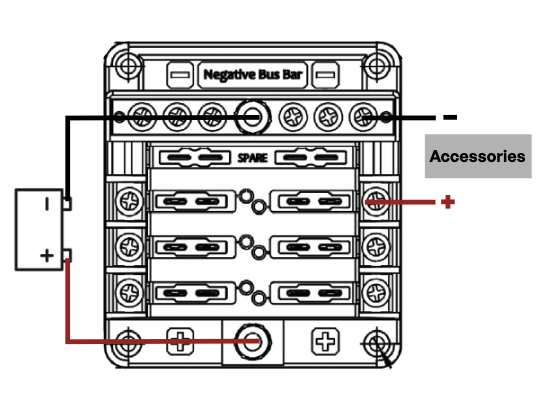
Ground Bus
Some blade fuse blocks, like the BLC-108-G and BLR-1206-G, come with a built-in ground bus. A fuse block with grounding saves space by eliminating the need external negative bus, making it especially handy in boat and RVs that may not have a chassis-ground type system.
Split Bus
Multiple OptiFuse blade fuse blocks, including the BLR-412-G and BLR-I-906-G, come with a split bus feature that allows for two isolated groups of circuits, which is convenient for combining switched and unswitched circuits on the same block. With switched circuits, the battery switch comes first and that circuit then powers electronics like radio and GPS, which turn on when the switch is turned on.
Unswitched circuits power electronics separate from the battery switch. This means that split bus fuse blocks are ideal when an unswitched circuit is required isolated from the vehicle’s battery switch. For example, when an RV battery is turned off, unswitched circuits allow the vehicle’s emergency warning devices to remain on.
To ensure this is the case, a fuse block with a split bus feature should be wired directly to the battery, bypassing the battery switch.
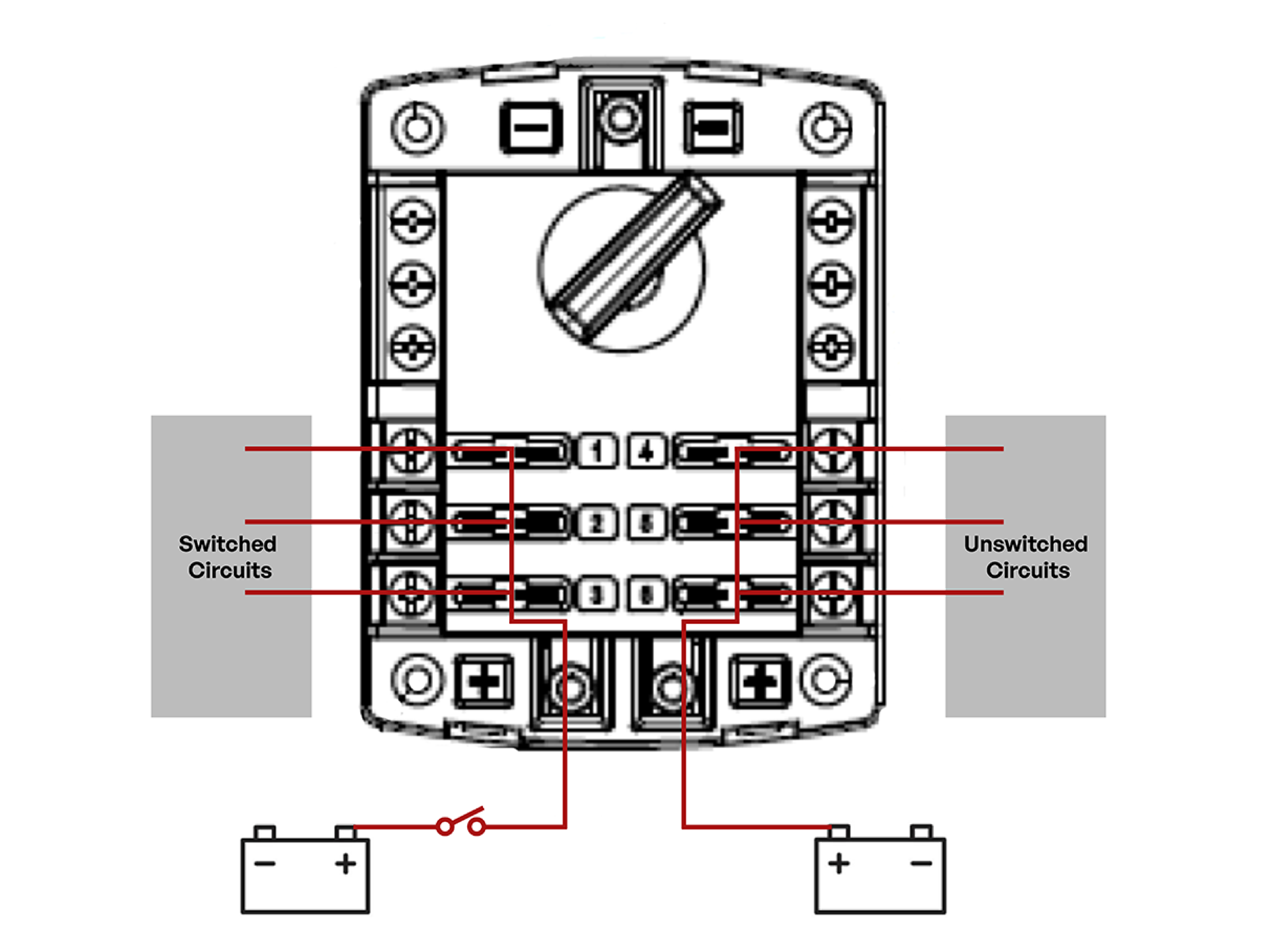
Modular Fuse Blocks
OptiFuse offers modular design fuse blocks—specifically the BLR-806 Series, BLR-I-806 and BLR-800-G Series—that can create four different configurations from two basic modules. They are versatile, easy to use and reduce part numbers to stock for all build requirements. For a detailed look at how this modular system works and all the available options, check out our article: Modular Design Fuse Blocks: 4 Blocks with Only 2 Modules.

Choosing the Right Fuse
Selecting the correct fuse is a critical decision in ensuring the safety and reliability of your electrical system. Proper fuse selection requires careful consideration of factors such as current ratings, overcurrent protection features, and ambient temperature conditions. See our Fuse Selection Guide for complete context.
Samuel Kenny, Product Manager at OptiFuse, leads the development of advanced circuit protection products for automotive, marine, and industrial sectors. He designs custom solutions and shares expert fuse selection tips on the OptiFuse Blog.